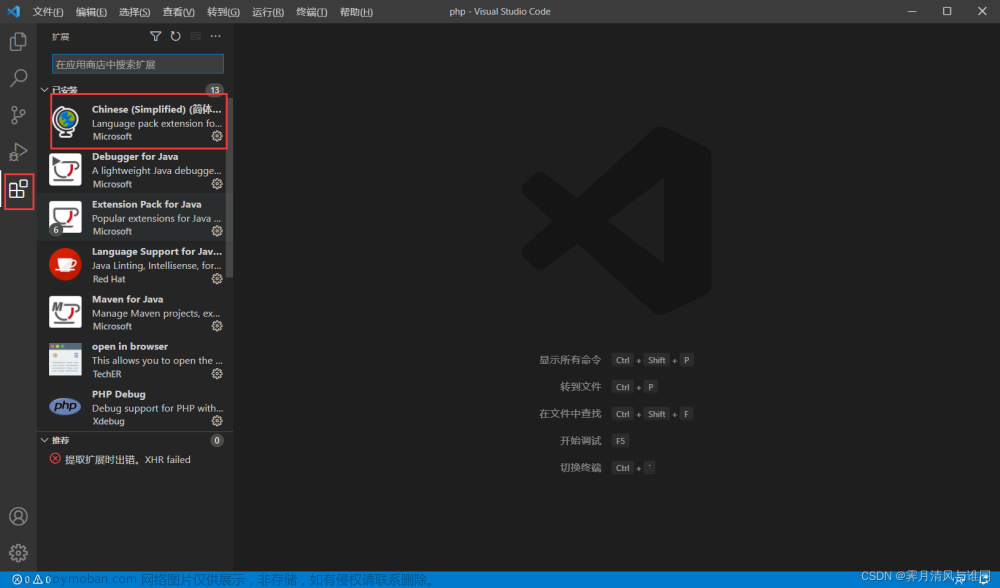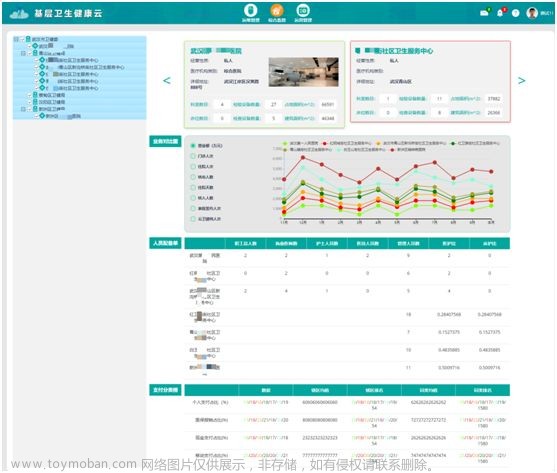本文内容学习于:后盾人 (houdunren.com)
一、原型对象
每个对象都有一个原型prototype对象,通过函数创建的对象也将拥有这个原型对象。
原型是一个指向对象的指针。
1.可以将原型理解为对象的父亲,对象从原型对象继承来属性
2.原型就是对象除了是某个对象的父母外没有什么特别之处
3.所有函数的原型默认是 Object的实例,所以可以使用toString/toValues/isPrototypeof 等方法的原因4.使用原型对象为多个对象共享属性或方法
5.如果对象本身不存在属性或方法将到原型上查找
6.使用原型可以解决,通过构建函数创建对象时复制多个函数造成的内存占用问题7.原型包含 constructor 属性,指向构造函数
8.对象包含proto指向他的原型对象
1.关于创建原型
Object.getPrototypeof() //返回指定对象的原型
Object.create()// 创建一个新对象,使用现有的对象来作为新创建对象的原型
// 创建一个xj对象,但是它的原型指定为Null,
let xj = Object.create(null, { name:{value:"向军"});
console.log(xj.hasOwnProperty("name"));//Error hasOwnProperty是object原型上的方法,null上面没有
2.函数拥有多个原型,prototype 用于实例对象使用, __proto__用于函数对象使用
3.使用 setPrototypeof 与 getPrototypeof 获取与设置原型
Object.setPrototypeOf(obj, prototype)//obj 要设置其原型的对象 ,prototype 该对象的新原型(一个对象或 null)。
Object.getPrototypeof(object)// 要返回其原型的对象。
二、原型检测
instanceof 检测构造函数的 prototype 属性是否出现在某个实例对象的原型链上
isPrototypeof 检测一个对象是否是另一个对象的原型链中
三、属性遍历
1.使用in 检测原型链上是否存在属性,使用 hasOwnProperty 只检测当前对象
let a = { url: "houdunren" };
let b = { name:"后盾人"};
Object.setPrototypeof(a, b);
console.log("name" in a);
console.log(a.hasOwnProperty("name"));console.log(a.hasOwnProperty("url"));
2.使用 for/in 遍历时同时会遍历原型上的属性
let hd = { name:"后盾人"};
let xj = Object.create(hd, { url:{value: "houdunren.com", enumerable: true});
for (const key in xj) {
console.log(key);}
3.hasOwnProperty 方法判断对象是否存在属性,而不会查找原型。
所以如果只想遍历对象属性使用以下代码
let hd = { name:"后盾人"}; let xj = Object.create(hd, {
url:{
value: "houdunren.com", enumerable: true
}
});
for (const key in xj) {
if (xj.hasOwnProperty(key)){
console.log(key);}ps:this 不受原型继承影响,this 指向调用属性时使用的对象。
四、原型总结
<1>. prototype
函数也是对象也有原型,函数有 prototype 属性指向他的原型
为构造函数设置的原型指,当使用构造函数创建对象时把这个原型赋予给这个对象
1.函数默认prototype 指包含一个属性 constructor 的对象,constructor 指向当前构造函数
function User(name) {
this.name = name;
let xj = new User("向军"); console.log(xj);
console.log(User.prototype.constructor == User); //true console.log(xj. proto == User.prototype);//true
let lisi = new xi.constructor("李四");
console.log(lisi._proto__== xj._proto__); //true
<2>. Object.create
使用object.create创建一个新对象时使用现有对象做为新对象的原型对象
1.使用object.create 设置对象原型
let user = { show() {
return this.name;};
let hd = Object.create(user); hd.name ="向军";
console.log(hd.show(());
2.在设置时使用第二个参数设置新对象的属性
let user = { show() {
return this.name;};
let hd = Object.create(user, {
name:{
value:"后盾人"}
});
console.log(hd);
<3>.__proto__
在实例化对象上存在 __proto__记录了原型,所以可以通过对象访问到原型的属性或方法。
1.__proto__不是对象属性,理解为prototype 的 getter/setter 实现,他是一个非标准定义
2.__proto__内部使用getter/setter 控制值,所以只允许对象或 null
3.建议使用 Object.setPrototypeOf 与Object.getProttoeypof 替代 proto
特例:下面定义的_proto就会成功,因为这是一个极简对象,没有原型对象所以不会影响_proto赋值。
let hd = Object.create(null);
hd._proto__= "向军";
console.log(hd);//{__proto_:"向军"}
1.可以通过改变对象的 proto 原型对象来实现继承,继承可以实现多层,
let hd = {name:"后盾人"};
let houdunren = {show() {return this.name;}};
let xj = { handle() {return '用户:${this.name}`;}};
houdunren. proto =xj;hd. proto = houdunren;
console.log(hd.show());
console.log(hd.handle(());
console.log(hd);
2.可以使用 proto 或 Object.setPrototypeof 设置对象的原型,使用object.getProttoeypof 获取对象原型
function Person() {
this.getName = function() {
return this.name;};
function User(name, age){
this.name = name; this.age = age;
let lisi = new User("李四",12);
Object.setPrototypeof(lisi, new Person()); console.log(lisi.getName());//李四
3.对象设置属性,只是修改对象属性并不会修改原型属性,使用hasOwnProperty 判断对象本身是否含有属性,并不会检测原型。
4.使用 in 会检测原型与对象,而 hasOwnProperty 只检测对象,所以结合后可判断属性是否在原型中
function User() {
User.prototype.name = "后盾人"; const lisi = new User();//in会在原型中检测
console.log("name" in lisi);//true 对象的原型上有//hasOwnProperty 检测对象属性
console.log(lisi.hasOwnProperty("name"));//false 对象本身上没有
五、原型使用建议总结:
1.prototype 构造函数的原型属性
2.Object.create 创建对象时指定原型
3.proto 声明自定义的非标准属性设置原型,解决之前通过 Object.create 定义原型,而没提供获取方法
4.Object.setPrototypeof 设置对象原型
这几种方式都可以管理原型,一般以我个人情况来讲使用prototype更改构造函数原型,使用Ob1ect.setPrototypeof与 obiect.getPrototypeof获取或设置原型
六、构造函数:
1.原型属性
1)构造函数在被new时把构造函数的原型(prototype)赋值给新对象。如果对象中存在属性将使用对象属性,不再原型上查找方法。
2)对象的原型引用构造函数的原型对象,是在创建对象时确定的,当构造函数原型对象改变时会影响后面的实例对象。之前已经创建的实例对象不受影响
function hd() {}
hd.prototype.name = "hdcms"; const objl = new hd();
console.log(objl.name); //hdcms
hd.prototype ={ name:"后盾人"};
const obj2 = new hd(();
console.dir(obj2.name);//后盾人
console.log(obj1.name);//hdcms //还是原来的,不受影响
2.constructor
1)构造函数的原型中包含属性 constructor 指向该构造函数
function User(name) {this.name = name;}
let hd = new User("后盾人");
let xj = new hd.constructor("向军"); console.log(xj);
2)直接设置了构造函数的原型将造成 constructor丢失!!!正确的做法是要保证原型中的constructor指向构造函数
function User(name) {this.name = name;}
User.prototype = {constructor: User,// 保证constructor指向构造函数 show:function() {}};
let hd = new User("后盾人");
let xj = new hd.constructor("向军"); console.log(xj);
3.使用优化
注意:使用构造函数会产生函数复制造成内存占用,及函数不能共享的问题。
function User(name) {
this.name = name;
this.get = function() {
return this.name;};
let lisi = new User("小明"); let wangwu = new User("王五");
console.log(lisi.get == wangwu.get); //false
正确方式;通过原型定义方法不会产生函数复制,所有对象公用构造函数原型上方法(解决、通过构造函数创建对象函数复制”的内存占用问题!)
function User(name) {
this.name =name;User.prototype.get = function() { return "后盾人"+this.name;};
let lisi = new User("小明");
let wangwu = new User("王五");
console.log(lisi.get == wangwu.get); //true
//通过修改原型方法会影响所有对象调用,因为方法是共用的 lisi. proto .get= function() { return "后盾人"+this.name;
console.log(lisi.get());console.log(wangwu.get());
七、继承与多态
当对象中没使用的属性时,Js 会从原型上获取这就是继承在 JavaScript 中的实现。
1.继承实现
使用object.create 创建对象,做为Admin、Member的原型对象来实现继承。
function User() {}
User.prototype.getUserName = function() {};
function Admin(() {}
Admin.prototype = Object.create(User.prototype);Admin.prototype.role = function() {};
function Member() {}
Member.prototype = Object.create(User.prototype);Member.prototype.email = function() {}; console.log(new Admin(());
console.log(new Member ());
注意:不能使用以下方式操作,因为这样会改变 User 的原型方法,这不是继承,这是改变原型!!!
function User() {}
User.prototype.getUserName = function(() {};
function Admin(() {}
Admin.prototype=User.prototype;
Admin.prototype.role = function(() {};
2.构造函数
1)有多种方式通过构造函数创建对象
function Admin() {}
console.log(Admin == Admin.prototype.constructor); //true
let hd =new Admin.prototype.constructor();console.log(hd);
let xj = new Admin ();console.log(xj);
2)因为有时根据得到的对象获取构造函数,然后再创建新对象所以需要保证构造函数存在,
但如果直接设置了 Admin.prototype 属性会造成constructor丢失,所以需要再次设置constructor值。
function User() {}
function Admin() {}
Admin.prototype =Object.create(User.prototype);Admin.prototype.role= function(){};
let xj = new Admin ();
console.log(xj.constructor);//constructor丢失,返回User构造函数
Admin.prototype.constructor = Admin;let hd = new Admin ();
console.log(hd.constructor);//正确返回Admin构造函数
//现在可以通过对象获取构造函数来创建新对象了 console.log(new hd.constructor());
3)使用object.defineProperty定义来禁止遍历 constructor属性
function User() {}
function Admin(name) {this.name = name;}
Admin.prototype =Object.create(User.prototype);Object.defineProperty(Admin.prototype, "constructor",
{value: Admin,enumerable: false //禁止遍历});
let hd = new Admin("后盾人"); for (const key in hd) {
console.log(key);}注意:完全重写构建函数原型,只对后面应用对象有效!
3.方法重写
//子类需要重写父类方法的技巧。
function Person() {}
Person.prototype.getName= function() {console.log("parent method");};function User(name) {}
User.prototype=Object.create(Person.prototype);User.prototype.constructor=User;
User.prototype.getName= function(() {//调用父级同名方法Person.prototype.getName.call(this); console.log("child method");};
let hd = new User(); hd.getName();
4.多态
根据多种不同的形态产生不同的结果,下而会"根据不同形态的对象得到了不同的结果”。
function User() {}
User.prototype.show=function() {
console.log(this.description());};
function Admin() {}
Admin.prototype =Object.create(User.prototype); Admin.prototype.description = function() { return "管理员在此";};
function Member() {}
Member.prototype =Object.create(User.prototype); Member.prototype.description = function() { return "我是会员";};
function Enterprise() {}
Enterprise.prototype =Object.create(User.prototype); Enterprise.prototype.description = function() { return "企业帐户";for (const obj of[new Admin(), new Member(), new Enterprise()]) {
obj.show();}
八、深挖继承
继承是为了复用代码,继承的本质是将原型指向到另一个对象。
1.构造函数
我们希望调用父类构造函数完成对象的属性初始化,但像下面这样使用是不会成功的。因为此时 this 指向了 window,无法为当前对象声明属性。
function User(name) {
this.name = name;
console.log(this);// WindowUser.prototype.getUserName=function() {
return this.name;
);
function Admin(name) { User(name);Admin.prototype=Object.create(User.prototype); Admin.prototype.role= function() {};
let xj = new Admin("向军大叔");
console.log(xj.getUserName());//undefined
解决上面的问题是使用 cal1/apply 为每个生成的对象设置属性
function User(name) {
this.name = name;
console.log(this); // AdminUser.prototype.getUserName=function(() {
return this.name;};function Admin(name) {
User.call(this, name);
Admin.prototype =Object.create(User.prototype);
let xj = new Admin("向军大叔");
console.log(xj.getUserName());//向军大叔
2.函数的 apply()与call()
ps:call的第一个参数,就是改变函数的作用域,后面的参数为传入函数的所需的参数,必须与原函数的参数一直
<script type="text/javascript">
var testo = { name: "Lily" }; function funcA(a,b) {
alert(this);
alert("Function A");function funcB(a,b) {
funcA.call(testo, a,b);funcB(1,2); //this变成了testo
</script>
我们定义funcB函数的中,调用了funca的call函数,这个时候我们改变了funca中this的指向,原本指向window的,现在指向了cal1的第一个参数testo这个对象。而目调用call时,因为funca函数有两个参数,所以如果要想funca传递参数,必须--指出参数,即后面的两个参数a和n,或者可以只传第一个参数
即:funcA.call(testo);或者只传a,即:funcA.call(testo,a);
而apply与cal1的区别仅在于,apply的第二个参数可以是数组形式,而且不必--指出参数,funcA.apply(testo,[a,b])
3.原型工厂
原型工厂是将继承的过程封装,使用继承业务简单化
function extend(sub, sup){
sub.prototype=Object.create(sup.prototype);sub.prototype.constructor = sub;
}
function Access() {}
function User(() {}
function Admin() {}
function Member() {}
extend(User,Access);//User继Accessextend(Admin,User);//Admin继承User
extend(Member,Access);//Member继承Access
Access.prototype.rules = function(() {};User.prototype.getName= function(){};
console.log(new Admin());// 继承关系:Admin>User>Access>Objectconsole.log(new Member());//继本关系:Member>Access>Object
4.对象工厂
在原型继承基础上,将对象的生成使用函数完成,并在函数内部为对象添加属性或方法。
function User(name, age) {
this.name = name; this.age = age;
User.prototype.show= function () {
console.log(this.name, this.age);};function Admin(name,age){
let instance =Object.create(User.prototype); User.call(instance, name, age); instance.role=function(){
console.log('admin.role');}
return instance;文章来源:https://www.toymoban.com/news/detail-626620.htmllet hd = Admin("后盾人",19); hd.show();
function member(name, age) {
let instance = Object.create(User.prototype); User.call(instance, name, age); return instance;
let lisi = member("李四",28); lisi.show();文章来源地址https://www.toymoban.com/news/detail-626620.html
到了这里,关于JS 原型与继承的文章就介绍完了。如果您还想了解更多内容,请在右上角搜索TOY模板网以前的文章或继续浏览下面的相关文章,希望大家以后多多支持TOY模板网!











